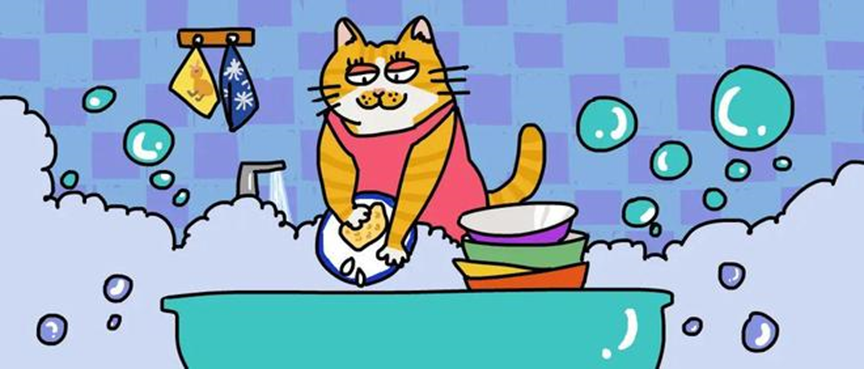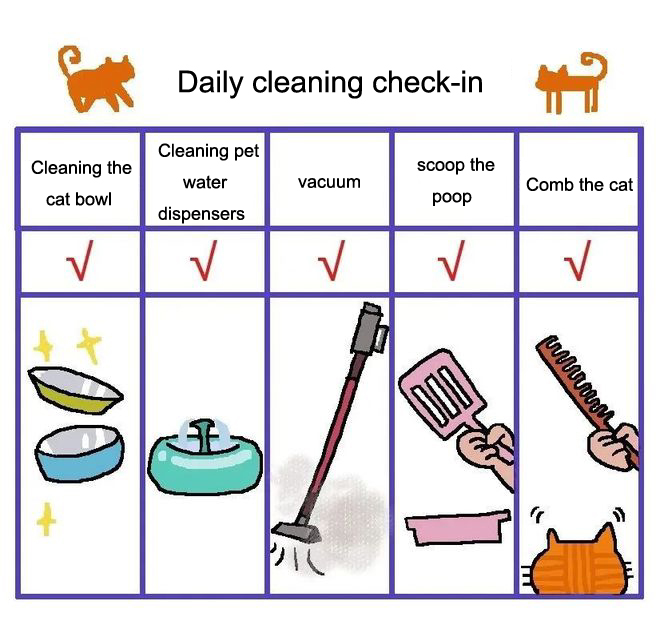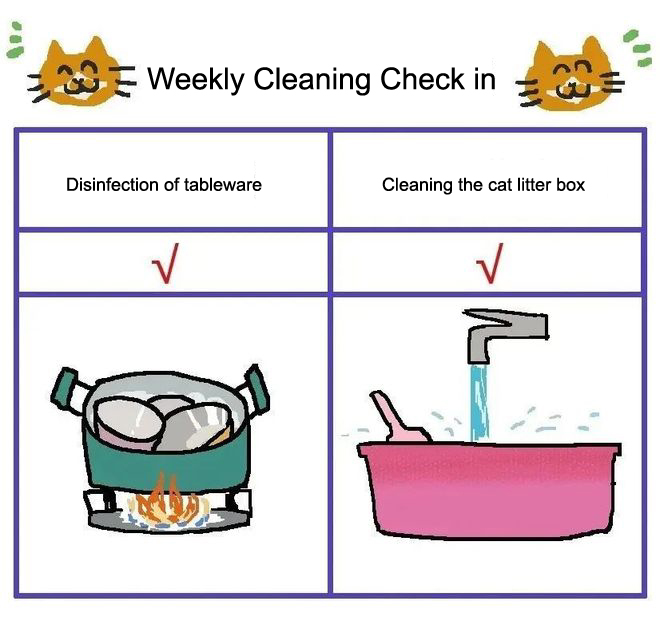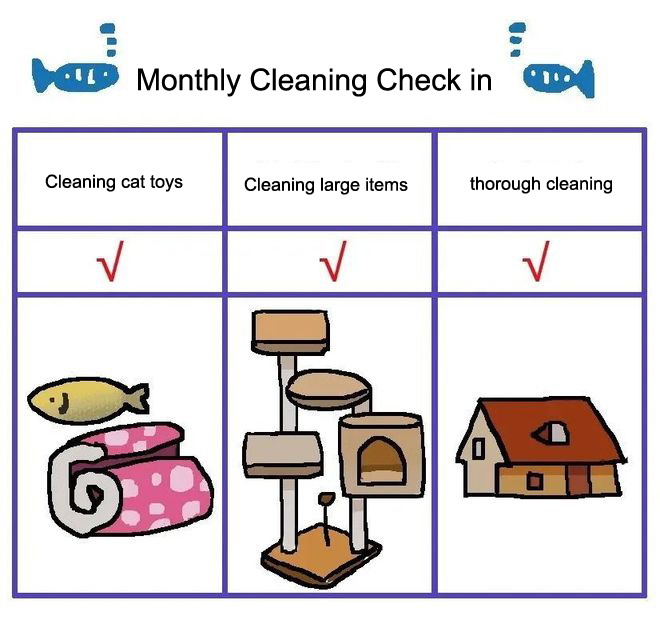
News list
新闻列表
Speak of civilization, cultivate a new style, and love cleanliness, starting with cats~
People always have a stereotype of pet owning homes as unhygienic and unclean. The National Health Foundation (NSF) in the United States once conducted a survey and found that pet bowls are one of the top ten places with the most bacteria in households. If Mao Haizi's bowl is not washed for a few days, it becomes a paradise for bacteria such as MRSA (a type of Staphylococcus aureus) and Bacteroides.
But, little cats are carefully grooming themselves every day, how particular they are! How clean! How can you blame the kitten! It must be human Think about it, when was the last time you washed cat bowls, cat water dispensers, and cat litter boxes~
Today, we bring you the most ideal cat home cleaning table. You can adjust it according to your actual situation. For the health of you and your cat, get moving~

every day
● Clean the cat bowl. It is recommended to choose food grade stainless steel bowls, ceramic bowls, and glass bowls instead of plastic bowls. Wash them thoroughly once a day, especially for households that feed wet food. It is best for cats to wash them off immediately after eating. As for whether to use dishwashing detergent or specialized detergent, there is no particular rule. Just rinse it clean and let it dry before use.
● Clean the water dispenser. The surface of the water bowl is prone to forming a slippery biofilm, which is difficult to avoid even for automatic water dispensers. It is important to brush it regularly, replace the drinking water, and regularly replace the filter element.
● Vacuum cleaning. Vacuum cleaners are really the shining light of pet raising families! Not only does it deal with dust and hair, but it also helps to deal with parasitic problems such as fleas. When vacuuming, bring along bed sheets, cat beds, and cat climbing frames to effectively reduce cat fur.
● Scrape shit. If the litter box is not clean enough, the owner is prone to defecating randomly. Timely cleaning of cat litter can also prevent the growth of bacteria and prevent digging a pile of feces at once, which can cause damage to human wrists and sense of smell~
● Comb the cat's fur. Choose a suitable comb based on the cat's preferences and fur condition, comb along the direction of the fur, and also check the cat's skin. It is not recommended to use needle combs and hair removal combs frequently, as they can easily damage the cat's skin.

Weekly
● Disinfect cat tableware. The National Health Foundation (NSF) recommends pet owners to disinfect their pet food bowls, water bowls, and cat food bins weekly. If there are disinfection cabinets and dishwashers at home, you can also use them more.
● Clean the litter box. Thoroughly replace the litter box, thoroughly clean and disinfect the litter box, and use a cat friendly disinfectant. If the cat has an infectious disease, the cleaning interval can be shortened further. Don't worry about cat litter! Health protection is more important! Wow!

Monthly
● Clean cat toys. Plush small fish and blankets that can be put into the washing machine, add some cat friendly disinfectant to thoroughly clean and air dry. If it's a relatively large cat litter, it's better to vacuum it once. Remove any removable jackets or mats and wash them, then let them dry in the bright sun.
● Clean up large furniture. In addition to daily vacuuming, use a hair scraper/hard brush/vacuum cleaner every month to remove the hair hanging on furniture and climbing frames. Wet your hands and touch the sofa and bed sheets once, which can also have a miraculous effect. Then spray disinfectant, keep it ventilated and dry, or expose it to the sun.
● Great cleaning. Replace human bed sheets and sheets, use cat friendly disinfectants or steam mops to mop the floor, and pay more attention to hygiene blind spots under the bed, sofa, and carpet. If there are fleas, cockroaches and other problems at home, you can spray medicine, but be careful not to let the cat come into contact.

Emergency cleaning
If a cat vomits or urinates, immediately use a tissue to press and suck it off, then spray it with a cleaning agent (preferably containing biological enzymes), let it dry or take it to the sun to dry. Be careful to cover the cat with something to avoid adding urine to the urine.
Be sure to use cleaning products that are non-toxic to cats, such as potassium hydrogen persulfate complex salt and hypochlorous acid (please review:), dilute them strictly according to requirements, and it is best to separate cats and let them in after cleaning and drying. Regularly replace items such as cat teaser sticks and cat scratching boards that are difficult to clean.
Actually, cleaning up well is important for the health of both cats and humans. Washing dishes and vacuuming casually every day can help develop good habits~
So, back to the original question, have you met the standard?

